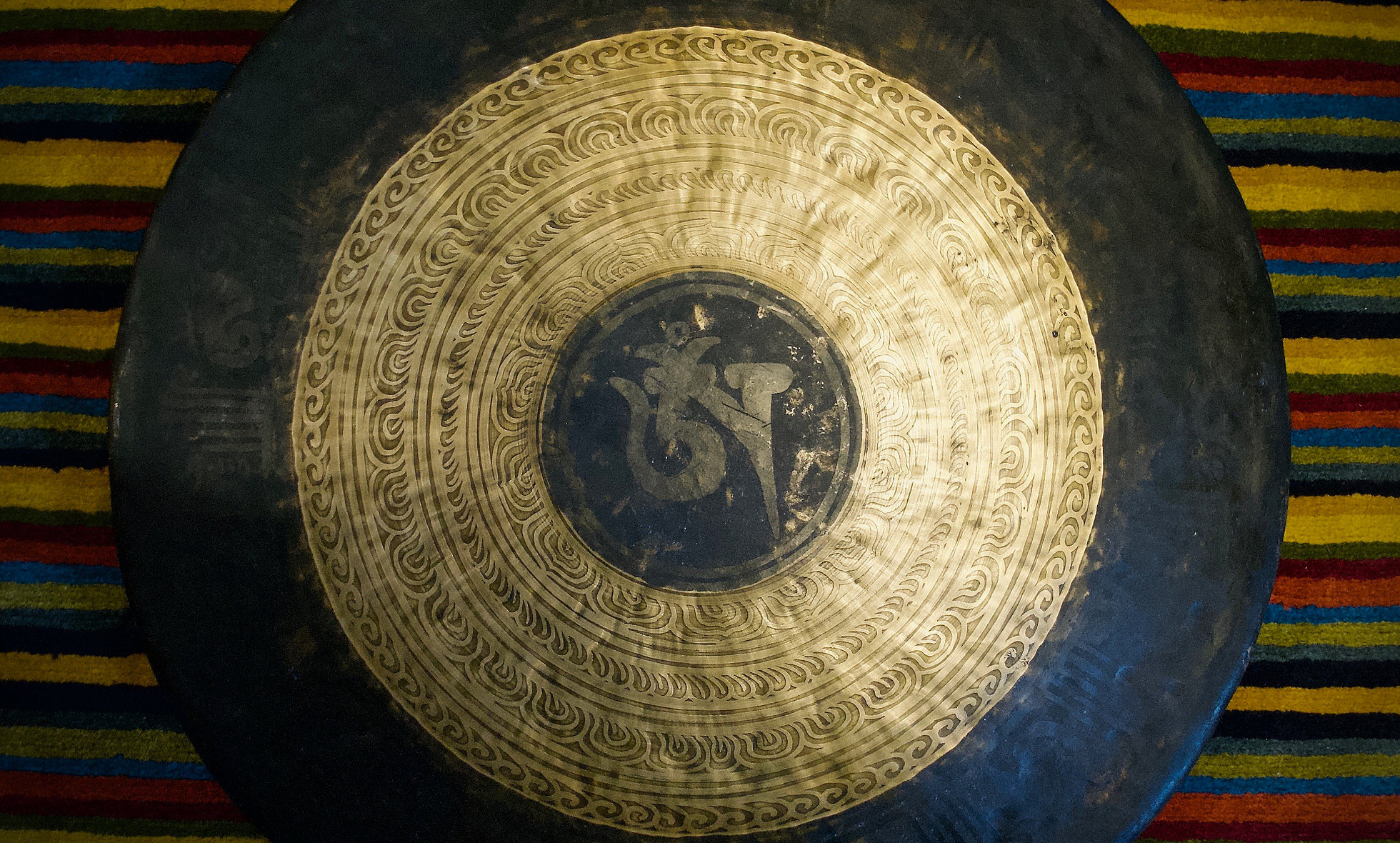gongs & tam-tams
Gong
This is the generic name for the family of percussion instruments (excluding cymbals) that are usually circular, or a disk when looked at in plan form, made from metal (normally bronze, brass, steel or other metal), that may or may not have a rim or turned over edge, that may or may not have a hammered out centre (boss, dome, nipple) and that may or may not be tuned to a specific note on a musical scale.
Tam-tam
The accepted definition of a tam-tam is a ‘flat-faced gong of indefinite pitch’. In other words, it does not have a boss/dome/nipple at its centre and may or may not have a turned over rim and has not been tuned to a specific pitch. Where a rim exists, it is only shallow in depth, normally no more than a few centimetres.
Examples of tam-tams with rims are the Paiste Symphonic Gong and the Chinese ‘Chao’ gong. Examples of rimless tam-tams are those from UFIP in Italy and the ‘Wind (Feng)’ gongs from China.
The characteristics of a tam-tam are a low fundamental note of indefinite pitch followed by a splash or crash of sound with many harmonics and overtones, the sound increasing in volume after the instrument has been struck.
Gong or Tam-tam? Here’s the need to know.
A lot of people get confused over the difference between a ‘gong’ and a ‘tam-tam’. Generally, if you are a percussionist or a composer, you make the distinction between the two. Most other people just use the term ‘gong’. These are my definitions.
Tam-tam
The accepted definition of a tam-tam is a ‘flat-faced gong of indefinite pitch’. In other words, it does not have a boss/dome/nipple at its centre and may or may not have a turned over rim and has not been tuned to a specific pitch. Where a rim exists, it is only shallow in depth, normally no more than a few centimetres.
Examples of tam-tams with rims are the Paiste Symphonic Gong and the Chinese ‘Chao’ gong. Examples of rimless tam-tams are those from UFIP in Italy and the ‘Wind (Feng)’ gongs from China.
The characteristics of a tam-tam are a low fundamental note of indefinite pitch followed by a splash or crash of sound with many harmonics and overtones, the sound increasing in volume after the instrument has been struck.
Tuned Gong
Tuned gongs are normally described as gongs that have been tuned to a specific pitch. They usually have a hammered or pressed out centre of varying depth, often referred to as a boss, dome, nipple or cupola. They also have a rim of varying depth, from the shallow rim as found on a tamtam, to very deep rims sometimes greater in depth than the diameter of the gong itself. Some of the gongs found in the Javanese and Balinese gamelan orchestras have this particular characteristic.
The characteristics of tuned gongs are a clear note with little or no shimmer, overtones or multitude of frequencies. The pitch may be tuned to either a Western scale (normally A = 442Hz) or an Eastern scale (e.g. a pentatonic scale). The tone can often be described as ‘bell like’.
Examples of gongs tuned to the Western scale are the Tuned Gong range from Paiste (sadly no longer made at time of writing). Examples of tuned gongs from South-East Asia and the Far East include Thai, Burmese, Javanese and Vietnamese bossed gongs, Chinese Bao gongs, gamelan gongs and Tibetan temple gongs.



